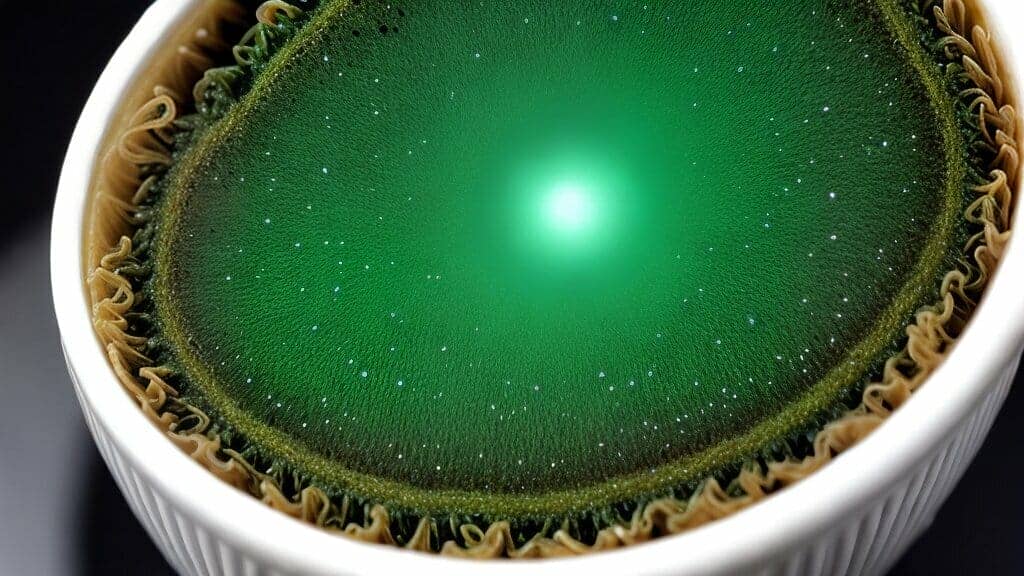Lyme Disease is a bacterial infection transmitted to humans through tick bites. While many people associate it with flu-like symptoms and joint pain, this disease can also cause a range of dermatological symptoms, including skin sensitivity, rashes, and reactions.
In this article, we will explore the link between Lyme Disease and skin sensitivity, examining its causes, symptoms, and potential management strategies. We will also hear from medical experts and individuals with personal experiences living with this condition.
Key Takeaways:
- Lyme Disease can cause dermatological symptoms like skin sensitivity and hypersensitivity.
- The immune system’s response to the infection may trigger skin reactions.
- There are holistic treatment options available for managing skin sensitivity in individuals with Lyme Disease.
- Raising awareness about Lyme Disease and its symptoms is vital for early detection and proper diagnosis.
Understanding Lyme Disease and its Dermatological Symptoms
Lyme Disease is a tick-borne illness caused by the spirochete bacterium Borrelia burgdorferi. It is primarily spread by the black-legged tick in the northeastern, mid-Atlantic, and north-central United States, as well as in parts of Europe and Asia. Lyme Disease can affect various organ systems, including the skin.
The dermatological symptoms of Lyme Disease can be diverse and may appear at different stages of the disease. The most common skin issue associated with Lyme Disease is erythema migrans, a circular, expanding rash that appears at the site of the tick bite. However, other dermatological symptoms may also occur such as skin sensitivity, rash, and hives. These symptoms are indicative of a type of hypersensitivity known as delayed-type hypersensitivity.
Understanding Lyme Disease and its Dermatological Symptoms:
| Key Points | Insights |
|---|---|
| Lyme Disease is spread by ticks | Lyme Disease is primarily spread by black-legged ticks in certain geographic regions |
| Erythema migrans is the most common skin symptom | The circular expanding rash that appears at the site of the tick bite is the most common skin symptom of Lyme Disease |
| Lyme Disease can cause skin sensitivity and hypersensitivity reactions | Delayed-type hypersensitivity reactions can cause skin sensitivity and dermatological symptoms in individuals with Lyme Disease |
It is essential to seek treatment as soon as possible if you suspect you have Lyme Disease. Early recognition and management can reduce the risk and severity of symptoms, including dermatological symptoms.
The Impact of Tick-Borne Illness on Skin Sensitivity
Tick-borne illnesses, such as Lyme Disease, can have a significant impact on an individual’s skin sensitivity and allergies. When an infected tick bites a person, it can transmit bacteria into the bloodstream, triggering an immune response that can lead to a wide range of symptoms, including skin rashes, hives, and heightened skin sensitivities.
According to experts, the underlying mechanisms behind tick-borne illnesses and skin reactions are complex and multifactorial. The bacteria that are transmitted through a tick bite can trigger an immune response that leads to chronic inflammation, which can impact the skin’s barrier function and increase its reactivity to environmental allergens.
Additionally, tick-borne illnesses can disrupt the normal balance of microorganisms in the gut, leading to a condition known as dysbiosis. Dysbiosis can have a wide range of effects on the body, including increased skin sensitivity and allergic reactions.
Research has also shown that certain tick-borne illnesses can impact the body’s ability to produce specific antibodies known as immunoglobulin E (IgE). IgE is involved in allergic reactions and is responsible for triggering the release of histamines, which can cause itching, redness, and inflammation in the skin.
Overall, tick-borne illnesses like Lyme Disease can contribute to a range of skin sensitivities and allergies by disrupting the body’s immune function and gut microbiome. Understanding these underlying mechanisms is critical for developing effective treatment approaches that can help manage these symptoms and improve overall quality of life for individuals with Lyme Disease.

The Connection Between Lyme Disease and Hypersensitivity
Lyme Disease can cause hypersensitivity in the skin, manifesting as skin reactions, itching, and discomfort. This occurs as a result of the immune system’s response to the bacterial infection caused by the Lyme Disease.
When a person contracts Lyme Disease, their body’s immune system recognizes the bacteria as a foreign invader and mounts an immune response to eliminate it. This immune response can also cause inflammation in the skin, leading to a hypersensitive state. In some cases, this hypersensitivity can persist even after the infection is treated, resulting in chronic skin issues.
This hypersensitivity can also worsen if the individual is re-infected with Lyme Disease or exposed to other tick-borne diseases. Additionally, certain medications used to treat Lyme Disease can also contribute to skin sensitivity.
Factors Contributing to Hypersensitivity in Lyme Disease
Several factors can contribute to the development of hypersensitivity and skin sensitivities in individuals with Lyme Disease:
| Factors | Explanation |
|---|---|
| Tick Saliva | Tick saliva contains compounds that can irritate the skin, leading to heightened skin sensitivities and allergic reactions. |
| Immune System Response | The immune system response to the bacterial infection can trigger inflammation and hypersensitivity in the skin. |
| Co-Infections | Tick-borne co-infections can trigger additional immune system responses, exacerbating skin sensitivities and hypersensitivity. |
| Medications | Certain medications used to treat Lyme Disease, such as antibiotics, can cause skin sensitivity as a side effect. |
It is essential to address these underlying factors in order to effectively manage skin sensitivity in individuals with Lyme Disease.

Expert Insights on Lyme Disease and Skin Sensitivity
Medical professionals and experts offer valuable insights into the relationship between Lyme Disease and skin sensitivity. According to Dr. John Aucott, director of the Johns Hopkins Lyme Disease Clinical Research Center, “skin sensitivity is a common symptom of Lyme Disease, particularly in the early stages of the infection.” He notes that this symptom is often accompanied by a rash known as erythema migrans.
Dr. Aucott emphasizes the importance of early diagnosis and treatment to minimize the risk of long-term complications, including chronic skin sensitivities. He recommends seeking medical attention if you experience any symptoms of Lyme Disease, such as a rash or fever, after spending time outdoors in a tick-infested area.
Dr. Christine Green, a dermatologist and associate professor at the University of Virginia, notes that individuals with Lyme Disease may also experience skin reactions to certain medications or topical treatments. She advises individuals to inform their healthcare providers of their Lyme Disease diagnosis when seeking treatment for skin issues to avoid any potential adverse reactions.

Dr. Leo Galland, a physician and expert in integrative medicine, suggests that addressing underlying gut imbalances may help reduce skin sensitivities in individuals with Lyme Disease. He notes that “gut dysbiosis is often present in individuals with chronic Lyme Disease and is known to contribute to a range of symptoms, including skin rashes and sensitivities.”
Overall, medical professionals and experts emphasize the importance of a comprehensive and individualized approach to managing skin sensitivity in individuals with Lyme Disease.
The Oasis Medical Institute: A Holistic Approach to Lyme Disease Treatment
For individuals with Lyme Disease and skin sensitivity, traditional treatment options may not provide sufficient relief. That’s where the Oasis Medical Institute comes in. Located in Tijuana, MX, the Institute offers an integrative approach to Lyme Disease treatment, with a focus on holistic therapies that support the body’s natural healing processes.
Medical Director Dr. Francisco Contreras MD has over 30 years of experience in integrative medicine and is a leading expert on Lyme Disease treatment. His team of healthcare professionals works closely with patients to develop personalized treatment plans that address the unique needs and symptoms of each individual.

The Oasis Medical Institute’s Lyme Disease treatment program includes a variety of holistic therapies, such as:
| Therapy | Description |
|---|---|
| Hyperthermia | A non-invasive therapy that uses heat to boost the immune system and help the body fight infections. |
| Oxygen Therapy | A therapy that delivers high levels of oxygen to the body, helping to promote healing and reduce inflammation. |
| Nutrition Therapy | A therapy that focuses on providing the body with the nutrients it needs to support optimal health and healing. |
| Herbal Medicine | A therapy that uses natural plant-based remedies to support the body’s healing processes. |
By taking a whole-person approach to Lyme Disease treatment, the Oasis Medical Institute helps patients manage not only their skin sensitivity, but also other symptoms such as fatigue, joint pain, and brain fog. The Institute’s integrative approach empowers patients to take an active role in their health and well-being.
If you’re interested in learning more about the Oasis Medical Institute’s Lyme Disease treatment program and how it can help manage skin sensitivity and other symptoms, visit their website or schedule a consultation today.
The Role of Lifestyle and Diet in Managing Lyme Disease and Skin Sensitivity
While medical treatment is essential for managing Lyme Disease and its associated dermatological symptoms, lifestyle and diet can also play a significant role in mitigating skin sensitivity and inflammation. By adopting healthy habits and consuming skin-supporting nutrients, individuals with Lyme Disease can support their skin’s healing and reduce the likelihood of flare-ups.
Stress management is crucial for minimizing skin sensitivity, as stress can trigger inflammation and lead to skin reactions. Engaging in relaxation techniques like deep breathing, meditation, or yoga can help calm the nervous system and promote skin health.
Exercise is also important for overall health and can help reduce the severity of Lyme Disease symptoms, including skin sensitivity. Gentle exercises like walking, swimming, or yoga can boost circulation, improve immune function, and support skin repair.
A nutritious diet is critical for maintaining skin health and reducing inflammation. Consuming a diet rich in antioxidants, vitamins, and minerals can support the skin’s natural defenses and promote healthy cellular function. Vitamins C and E, for example, are potent antioxidants that protect the skin from free radical damage and promote healing. Omega-3 fatty acids found in fatty fish, flaxseed, and chia seeds can also help reduce inflammation and support skin health.

Additionally, certain foods should be avoided to reduce the likelihood of skin reactions. Processed foods, sugar, and refined carbohydrates can trigger inflammation and exacerbate skin sensitivity. Gluten and dairy products may also contribute to skin issues in some people.
Individuals with Lyme Disease and skin sensitivity may benefit from consulting a registered dietitian to develop a personalized nutrition plan that supports their specific needs.
The Role of Liposomal Vitamin C
One specific nutrient that may benefit individuals with Lyme Disease and skin sensitivity is liposomal vitamin C. This form of vitamin C is encapsulated in liposomes, which protect the vitamin from degradation and enhance its absorption in the body. Liposomal vitamin C has been shown to have potent antioxidant and anti-inflammatory properties, making it an ideal supplement for reducing skin sensitivity and promoting healing.
A study published in the Journal of Translational Medicine found that liposomal vitamin C supplementation was effective in reducing inflammation and oxidative stress in individuals with Lyme Disease. The study also reported improvements in symptoms such as fatigue, headaches, and numbness.
Liposomal vitamin C supplements are available in most health food stores and can also be ordered online. Individuals with Lyme Disease and skin sensitivity should consult their healthcare provider before beginning any new supplement regimen.
The Role of Supportive Therapies in Managing Lyme Disease and Skin Sensitivity
For individuals with Lyme Disease and skin sensitivity, there are a variety of supportive therapies that can help manage their symptoms. These therapies can be used in conjunction with traditional medical treatments, such as antibiotics or antihistamines, to provide relief and improve overall well-being.
One such therapy is acupuncture. This ancient Chinese practice involves the insertion of thin needles into specific points on the body to stimulate energy flow and promote healing. Acupuncture has been shown to be effective in reducing pain, inflammation, and other symptoms associated with Lyme Disease.
Massage therapy is another supportive therapy that can benefit individuals with Lyme Disease and skin sensitivity. Massage can help improve circulation, reduce muscle tension, and promote relaxation. It can also stimulate the immune system and improve lymphatic function, which can aid in the elimination of toxins and other waste products.
| Image Description |
|---|
 |
Herbal remedies and supplements can also be helpful in managing skin sensitivity related to Lyme Disease. Supplements such as omega-3 fatty acids, vitamin D, and probiotics can support overall skin health and reduce inflammation. Herbal remedies such as chamomile, lavender, and rose can have a calming effect on the skin and improve its resilience.
It is important to work with a healthcare provider who is knowledgeable about Lyme Disease and supportive therapies. They can help develop a personalized treatment plan that takes into account the individual’s unique circumstances, health history, and preferences.
Furthermore, it is essential to conduct thorough research before trying any new therapy or supplement. Always choose a qualified practitioner and consult with a healthcare provider before starting any new treatment.
Tips for Protecting Sensitive Skin When Living with Lyme Disease
Individuals with Lyme Disease and skin sensitivity can take steps to protect their skin and minimize reactions. The following tips and strategies can help:
- Dress appropriately: Wear lightweight, long-sleeved clothing to cover as much skin as possible when spending time outdoors. Choose light colors to make it easier to spot ticks.
- Check for ticks regularly: Conduct full-body tick checks after spending time outdoors, and remove any ticks promptly using tweezers.
- Use insect repellent: Apply a DEET-containing insect repellent to exposed skin and clothing to help prevent tick bites.
- Avoid exposure to irritants: Stay away from harsh chemicals, such as household cleaners and perfumes, that can trigger skin reactions.
- Maintain a skincare routine: Use gentle, fragrance-free products to cleanse and moisturize the skin. Avoid hot showers and baths, and pat the skin dry after washing.
- Protect against sun damage: Wear a broad-spectrum sunscreen with an SPF of at least 30 when spending time outdoors. Reapply every two hours or after swimming or sweating.
- Manage stress: Learn stress-reduction techniques, such as meditation or deep breathing, to help prevent stress-related flare-ups.
- Stay hydrated: Drink plenty of water to keep the skin hydrated and healthy.
By taking these precautions and following a personalized treatment plan, individuals with Lyme Disease and skin sensitivity can manage their symptoms and improve their quality of life.

Seeking Professional Help: When to Consult a Healthcare Provider
If you are experiencing skin sensitivity related to Lyme Disease, it is important to consult a healthcare provider for proper diagnosis and treatment. Early detection can help prevent long-term complications and improve your overall outcome.
You should seek medical attention if you notice any unusual skin issues or develop a rash, particularly if it is accompanied by flu-like symptoms such as fever, muscle aches, and fatigue. It is important to inform your healthcare provider if you have been bitten by a tick or have spent time in a high-risk area for Lyme Disease.
Individualized treatment plans are crucial for managing Lyme Disease and its dermatological symptoms, including skin sensitivity. The Oasis Medical Institute in Tijuana, MX, offers a comprehensive Lyme Disease treatment program with an integrative approach that includes both traditional and alternative therapies. Medical director Dr. Francisco Contreras MD and his team of healthcare professionals specialize in Lyme Disease and can provide expert guidance and support.
If you are interested in booking a consultation with the Oasis Medical Institute, visit their website at https://www.oasisofhope.com or call 619-690-8450.

Common Misconceptions about Lyme Disease and Skin Sensitivity
There are many misconceptions surrounding Lyme Disease and skin sensitivity that can lead to misunderstandings and improper treatment. One common misconception is that Lyme Disease only affects those who spend time in wooded areas or are exposed to ticks. However, ticks can be found in many different environments, including urban areas, and anyone can be at risk of contracting Lyme Disease.
Another misconception is that Lyme Disease always presents with a bulls-eye rash. While this rash is a common symptom, it only occurs in about 70-80% of cases. Other dermatological symptoms, including skin sensitivity, can also occur in individuals with Lyme Disease.
Some people also believe that Lyme Disease is easily diagnosed and cured with a course of antibiotics. However, Lyme Disease can be difficult to diagnose, and some individuals may not respond to antibiotic treatment. In addition, some people may experience ongoing symptoms even after treatment.
It is important to dispel these and other misconceptions about Lyme Disease and skin sensitivity in order to improve understanding and facilitate proper treatment.
“Lyme disease is a complex condition that presents with a variety of symptoms, including dermatological manifestations. It is important for healthcare providers and individuals alike to be well-informed about the condition in order to properly diagnose and manage symptoms.” – Dr. Francisco Contreras MD, Medical Director of Oasis Medical Institute
By addressing these misconceptions and promoting accurate information, individuals with Lyme Disease and skin sensitivity can receive the care and treatment they need to manage their symptoms and improve their quality of life.

The Role of Lifestyle and Diet in Managing Lyme Disease and Skin Sensitivity
Aside from medical treatments, lifestyle and diet can play a crucial role in managing skin sensitivity caused by Lyme disease. A balanced lifestyle that includes stress management, exercise, and adequate sleep can help boost the immune system and reduce inflammation that can worsen skin reactions.
Additionally, a healthy diet can provide essential nutrients that promote skin health and support the body’s overall healing process. Nutrients such as vitamins A, C, and E, as well as omega-3 fatty acids and zinc, may have a beneficial effect on skin sensitivity caused by Lyme disease.
The following lifestyle and dietary tips can help individuals manage their skin sensitivity symptoms:
- Manage stress through activities such as meditation, yoga, or deep breathing exercises.
- Exercise regularly to improve circulation and strengthen the immune system. This can include low-impact activities such as walking, swimming, or cycling.
- Aim for seven to eight hours of quality sleep each night to help the body heal and repair.
- Eat a nutrient-dense diet that includes skin-friendly foods such as fatty fish, leafy greens, berries, and nuts.
- Limit intake of processed foods, refined sugars, and alcohol, which can trigger inflammation and worsen skin reactions.
- Stay well-hydrated by drinking plenty of water throughout the day.
It’s important to note that every individual’s needs may vary, and consulting with a healthcare professional or registered dietitian can provide personalized guidance and support for managing skin sensitivity caused by Lyme disease.
Image source: 
Personal Stories: Living with Lyme Disease and Skin Sensitivity
Living with Lyme Disease and skin sensitivity can be a challenging experience. Here are some personal stories from individuals who have firsthand experience with this symptom:
“I never realized how much my skin could react until I was diagnosed with Lyme Disease. Even the slightest touch or breeze can cause a reaction. It’s been a steep learning curve, but I’ve found some relief through holistic treatments like acupuncture and massage.”
– Sarah, age 38
“I used to love spending time outside, but now I’m constantly worried about getting bitten by a tick. Every time I develop a skin reaction, I feel like I’m suffocating. It’s important to stay informed and take precautionary measures, but it’s also important to seek professional help when needed.”
– Michael, age 45
These personal stories highlight the physical and emotional toll that Lyme Disease and skin sensitivity can take. However, they also offer hope and coping strategies for those experiencing this symptom.

Next, we’ll explore the importance of raising awareness about Lyme Disease and its dermatological symptoms, including skin sensitivity.
Promoting Awareness: Lyme Disease and Skin Sensitivity
In order to combat the spread of Lyme Disease and properly manage its symptoms, it is important to raise awareness about the condition and its dermatological effects, including skin sensitivity. While many people may be familiar with Lyme Disease, they may not be aware of the ways in which it can impact the skin and cause uncomfortable reactions.
One way to promote awareness is through education and outreach. Healthcare providers can play a key role in educating their patients about the signs and symptoms of Lyme Disease, as well as the importance of early detection and treatment. Schools and community organizations can also offer informational sessions or distribute educational materials to help spread the word.
In addition, online resources and social media can be powerful tools for raising awareness and connecting with others affected by Lyme Disease and skin sensitivity. Sharing personal stories, providing helpful tips, and highlighting reputable sources of information can all contribute to a greater understanding of the condition and its impact on the skin.

By working together to promote awareness, we can help ensure that individuals with Lyme Disease and skin sensitivity receive the support they need to manage their symptoms and lead healthy, fulfilling lives.
Expert Advice: Final Thoughts on Lyme Disease and Skin Sensitivity
Medical experts agree that Lyme Disease can cause significant skin sensitivity and hypersensitivity, which can impact an individual’s quality of life. However, with proper diagnosis and treatment, people with Lyme Disease can manage their skin-related symptoms and lead happy and healthy lives.
According to Dr. Francisco Contreras MD, medical director at Oasis Medical Institute, “Lyme Disease is a complex condition that requires a holistic approach to treatment. We specialize in integrative medicine, which combines conventional and alternative therapies to address the underlying causes of the infection and its symptoms.”
Dr. Contreras recommends a variety of holistic treatment options for individuals with Lyme Disease and skin sensitivity, including nutritional therapy, acupuncture, and herbal remedies. He emphasizes the importance of a healthy lifestyle, stress management, and regular exercise in managing Lyme Disease symptoms.
Other medical professionals stress the need for early detection and diagnosis of Lyme Disease, as well as individualized treatment plans that consider each person’s unique symptoms and circumstances.
Overall, experts urge individuals with Lyme Disease and skin sensitivity to seek professional help and explore holistic treatment options to manage their symptoms and improve their quality of life.

Section 16: Conclusion
Lyme Disease is a complex and potentially debilitating illness with a range of symptoms, including skin sensitivity and reactions. Understanding the connection between Lyme Disease and skin sensitivity is crucial for proper diagnosis and treatment.
Throughout this article, we have explored the various dermatological symptoms associated with Lyme Disease, the underlying mechanisms that trigger skin reactions, and holistic treatment options available to individuals affected by this symptom.
We encourage anyone who suspects they may have Lyme Disease or related skin sensitivity issues to seek professional help and explore various treatment approaches. The Oasis Medical Institute in Tijuana, MX, offers an integrative approach to Lyme Disease treatment that combines conventional and holistic therapies, led by medical director Dr. Francisco Contreras MD and his team of experts.
Remember that early detection and proper diagnosis are crucial in treating Lyme Disease and skin sensitivity. If you are experiencing symptoms, do not hesitate to reach out to a healthcare provider for guidance.
We hope that this article has provided valuable insights and information about Lyme Disease and skin sensitivity, and has helped to promote awareness and understanding of this important condition.
FAQ
Q: What is Lyme Disease?
A: Lyme Disease is an infectious disease caused by the bacterium Borrelia burgdorferi, which is transmitted to humans through the bite of infected black-legged ticks.
Q: How does Lyme Disease affect the skin?
A: Lyme Disease can cause various dermatological symptoms, including skin sensitivity, skin reactions, and hypersensitive skin.
Q: What is the connection between tick-borne illnesses and skin sensitivity?
A: Tick-borne diseases, such as Lyme Disease, can contribute to heightened skin sensitivities and allergies. Factors such as the immune system response and the presence of specific bacteria can trigger these reactions.
Q: How does Lyme Disease affect skin hypersensitivity?
A: Lyme Disease can cause hypersensitive skin due to the immune system’s response to the infection. This can result in increased skin sensitivity and reactions.
Q: What do experts say about Lyme Disease and skin sensitivity?
A: Medical professionals and experts specializing in Lyme Disease and dermatology provide insights into the relationship between Lyme Disease and skin sensitivity. They recommend individualized approaches for managing this symptom.
Q: What are the holistic treatment approaches for Lyme Disease and skin sensitivity?
A: Holistic treatment options for individuals with Lyme Disease and skin sensitivity include the integrative approach offered at the Oasis Medical Institute in Tijuana, MX. Medical director Dr. Francisco Contreras MD specializes in this field.
Q: How does lifestyle and diet impact Lyme Disease and skin sensitivity?
A: Lifestyle factors such as stress management, sleep, and exercise can impact Lyme Disease symptoms, including skin sensitivity. A healthy diet and specific nutrients also support skin health.
Q: What are the supportive therapies for managing skin sensitivity in Lyme Disease?
A: Additional supportive therapies such as acupuncture, massage, and herbal remedies can help manage skin sensitivity in individuals with Lyme Disease. Expert recommendations and research findings may inform these approaches.
Q: What tips can protect sensitive skin when living with Lyme Disease?
A: Practical tips to protect sensitive skin when living with Lyme Disease include following skincare routines, choosing appropriate clothing, and considering environmental factors.
Q: When should I consult a healthcare provider for Lyme Disease-related skin sensitivity?
A: It is appropriate to consult a healthcare provider if you are experiencing skin sensitivity related to Lyme Disease. Early detection, proper diagnosis, and individualized treatment plans are crucial. The Oasis Medical Institute offers a Lyme Disease treatment program and consultation booking is available.
Q: What common misconceptions exist about Lyme Disease and skin sensitivity?
A: Common misconceptions about Lyme Disease and skin sensitivity are addressed in order to provide accurate information and dispel myths surrounding the condition.
Q: What research and future directions exist for Lyme Disease and skin sensitivity?
A: Current research efforts and ongoing studies are summarized to highlight potential future directions and advancements in the diagnosis, treatment, and management of skin sensitivity in Lyme Disease.
Q: What are personal stories of individuals living with Lyme Disease and skin sensitivity?
A: Personal stories and experiences of individuals living with Lyme Disease and skin sensitivity are shared, offering insights into the challenges they face and their coping strategies.
Q: How can awareness be promoted for Lyme Disease and skin sensitivity?
A: Raising awareness about Lyme Disease and its dermatological symptoms, including skin sensitivity, is emphasized. Resources and suggestions for promoting awareness within communities, schools, and healthcare settings are provided.
Q: What is the expert advice on Lyme Disease and skin sensitivity?
A: Concluding thoughts from medical experts on Lyme Disease and skin sensitivity are presented, summarizing key takeaways and recommendations for individuals affected by this symptom.
Dr. Francisco Contreras, MD is a renowned integrative medical physician with over 20 years of dedicated experience in the field of integrative medicine. As the Medical Director of the Oasis of Hope Hospital in Tijuana, Mexico, he has pioneered innovative treatments and integrative approaches that have been recognized globally for the treatment of cancer, Lyme Disease, Mold Toxicity, and chronic disease using alternative treatment modalities. Dr. Contreras holds a medical degree from the Autonomous University of Mexico in Toluca, and speciality in surgical oncology from the University of Vienna in Austria.
Under his visionary leadership, the Oasis of Hope Hospital has emerged as a leading institution, renowned for its innovative treatments and patient-centric approach for treating cancer, Lyme Disease, Mold Toxicity, Long-Haul COVID, and chronic disease. The hospital, under Dr. Contreras's guidance, has successfully treated thousands of patients, many of whom traveled from different parts of the world, seeking the unique and compassionate care the institution offers.
Dr. Contreras has contributed to numerous research papers, articles, and medical journals, solidifying his expertise in the realm of integrative medicine. His commitment to patient care and evidence-based treatments has earned him a reputation for trustworthiness and excellence. Dr. Contreras is frequently invited to speak at international conferences and has been featured on CNN, WMAR2 News, KGUN9 News, Tyent USA, and various others for his groundbreaking work. His dedication to the medical community and his patients is unwavering, making him a leading authority in the field.
Contreras has authored and co-authored several books concerning integrative therapy, cancer, Lyme Disease and heart disease prevention and chronic illness, including "The Art Science of Undermining Cancer", "The Art & Science of Undermining Cancer: Strategies to Slow, Control, Reverse", "Look Younger, Live Longer: 10 Steps to Reverse Aging and Live a Vibrant Life", "The Coming Cancer Cure Your Guide to effective alternative, conventional and integrative therapies", "Hope Medicine & Healing", "Health in the 21st Century: Will Doctors Survive?", "Healthy Heart: An alternative guide to a healthy heart", “The Hope of Living Cancer Free”, “Hope Of Living Long And Well: 10 Steps to look younger, feel better, live longer” “Fighting Cancer 20 Different Ways”, "50 Critical Cancer Answers: Your Personal Battle Plan for Beating Cancer", "To Beat . . . Or Not to Beat?", and “Dismantling Cancer.”






















